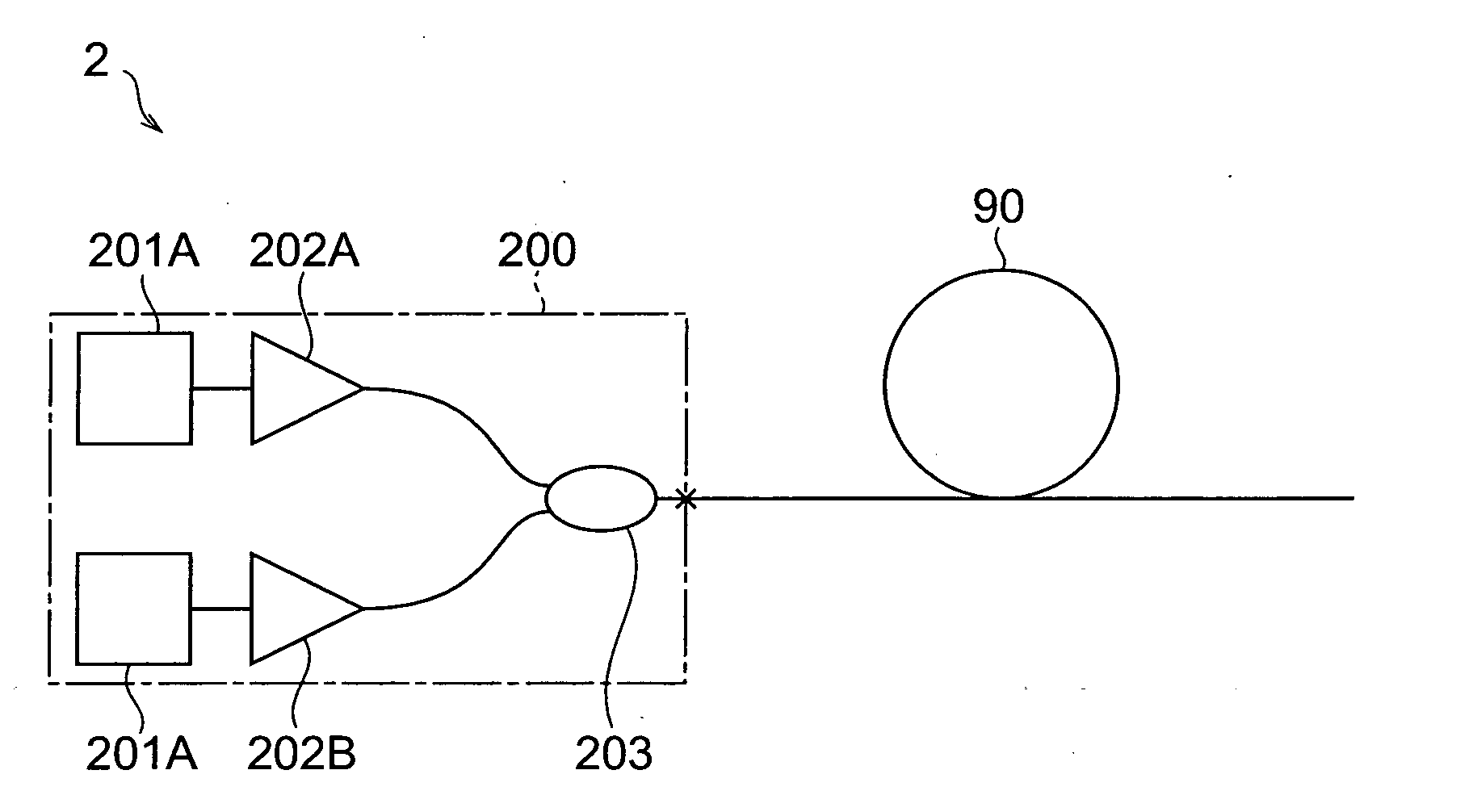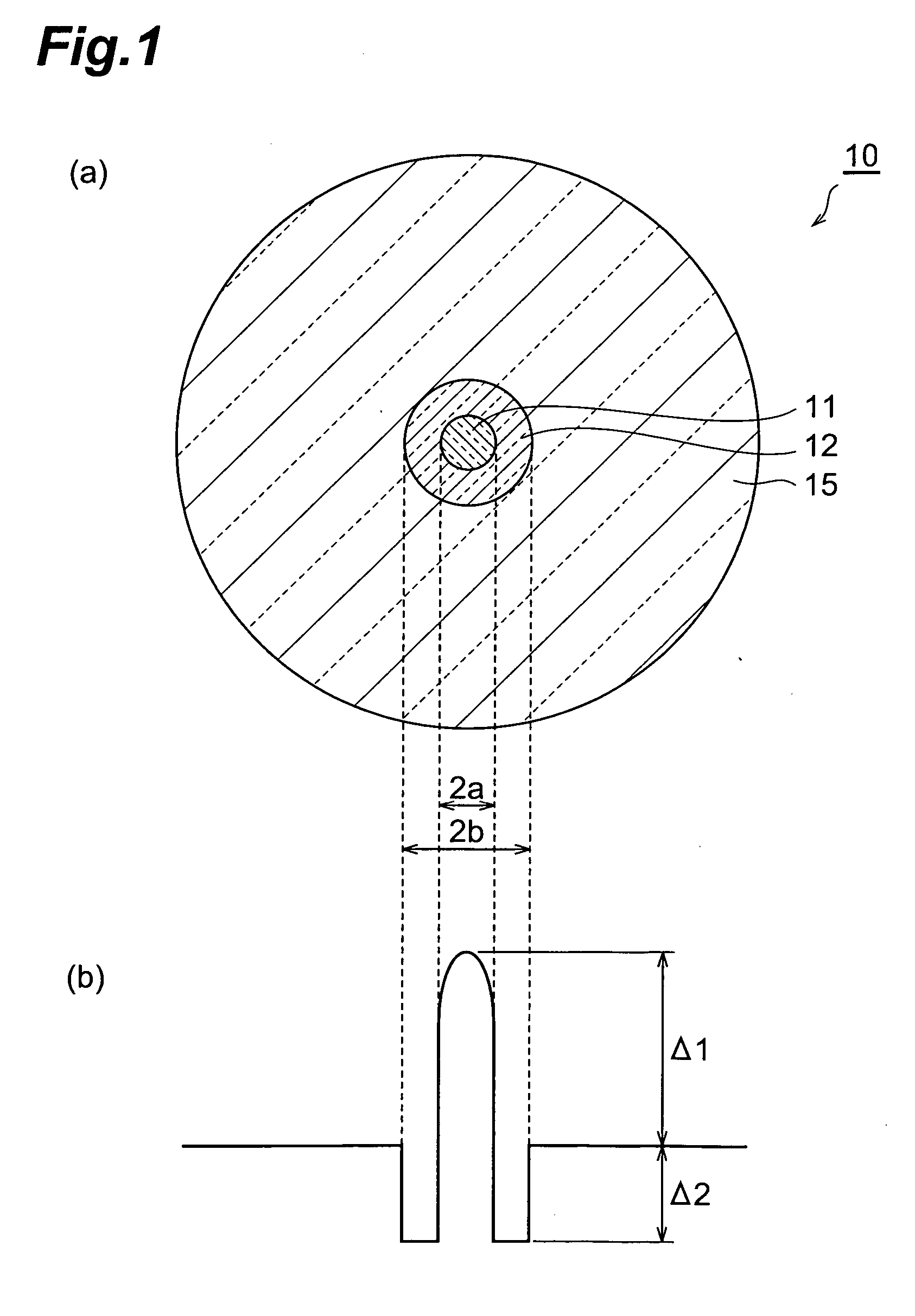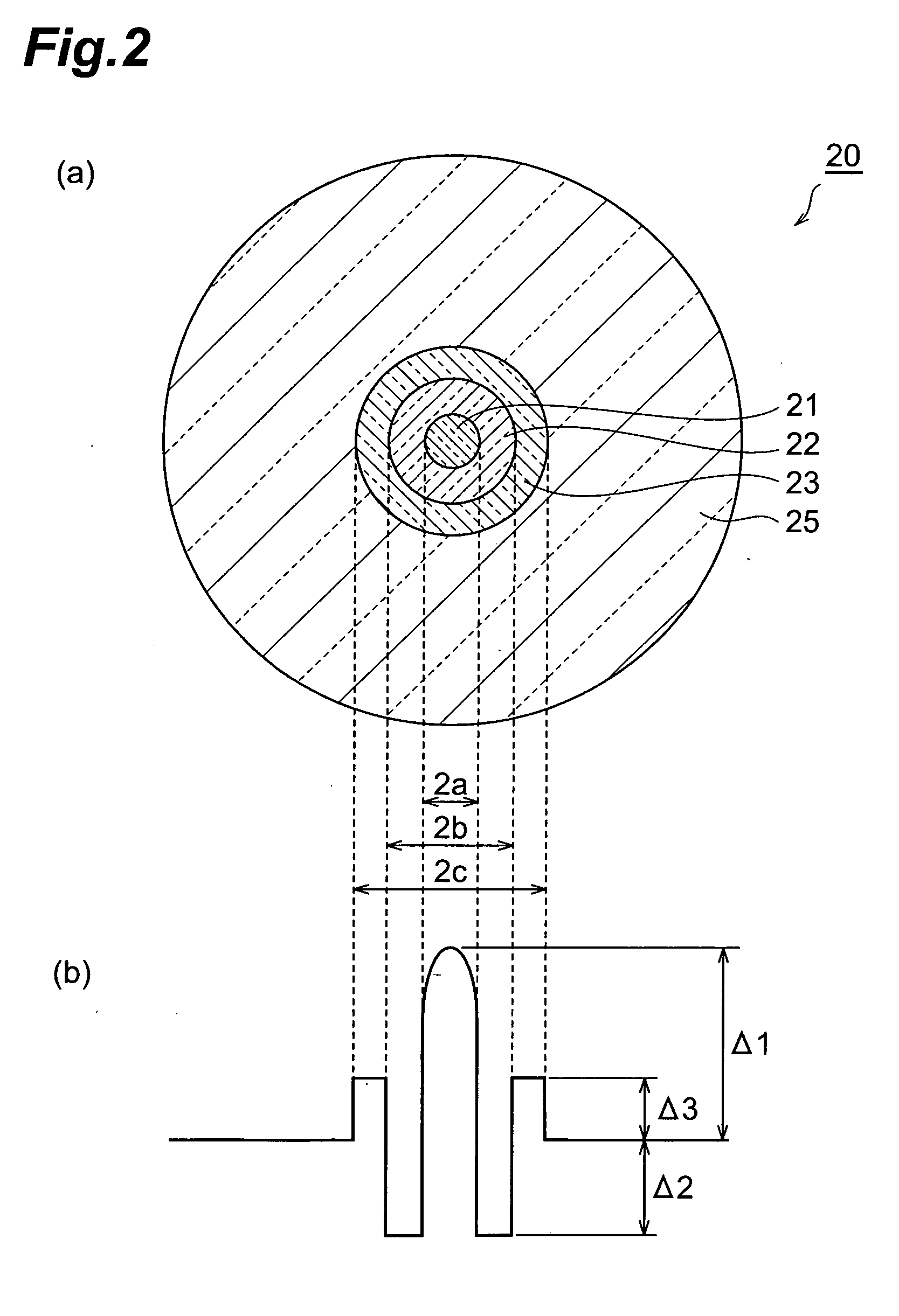Optical fiber and optical device using the same
- Summary
- Abstract
- Description
- Claims
- Application Information
AI Technical Summary
Benefits of technology
Problems solved by technology
Method used
Image
Examples
embodiment 1
[0097] The optical fiber according to Embodimente 1 has the first structure shown in FIG. 1. FIG. 11 is a refractive index profile of the optical fiber according to Embodiment 1 (showing the refractive indices of the respective portions along the radial direction). FIG. 12 is a graph showing the wavelength dependence of chromatic dispersion in the optical fiber according to Embodiment 1. FIG. 13 is a graph showing the wavelength dependence of dispersion slope in the optical fiber according to Embodiment 1. FIG. 14 is a graph showing the wavelength dependence of fourth-order dispersion in the optical fiber according to Embodiment 1.
[0098] In the optical fiber according to Embodiment 1, as shown in FIG. 11, the relative refractive index difference Δ1 of the center core region with respect to the outside cladding region is 1.42%, and the relative refractive index difference Δ2 of the first depressed region with respect to the outside cladding region is −0.83%. The ratio Ra (=2a / 2b) is...
embodiment 2
[0101] The optical fiber according to Embodiment 2 has the third structure shown in FIG. 3. FIG. 15 is a refractive index profile of the optical fiber according to Embodiment 2 (showing the refractive indices of the respective portions along the radial direction). FIG. 16 is a graph showing the wavelength dependence of chromatic dispersion in the optical fiber according to Embodiment 2. FIG. 17 is a graph showing the wavelength dependence of dispersion slope in the optical fiber according to Embodiment 2. FIG. 18 is a graph showing the wavelength dependence of fourth-order dispersion in the optical fiber according to Embodiment 2.
[0102] In this optical fiber according to Embodiment 2, as shown in FIG. 15, the relative refractive index difference Δ1 of the center core region with respect to the outside cladding region is 1.42%, the relative refractive index difference Δ2 of the first depressed region with respect to the outside cladding region is −0.83%, the relative refractive inde...
embodiment 3
[0105] The optical fiber according to Embodiment 3 has the third structure shown in FIG. 3. FIG. 19 is a refractive index profile of the optical fiber according to Embodiment 3 (showing the refractive indices of the respective portions along the radial direction). FIG. 20 is a graph showing the wavelength dependence of chromatic dispersion in the optical fiber according to Embodiment 3. FIG. 21 is a graph showing the wavelength dependence of dispersion slope in the optical fiber according to Embodiment 3. FIG. 22 is a graph showing the wavelength dependence of fourth-order dispersion in the optical fiber according to Embodiment 3.
[0106] In this optical fiber according to Embodiment 3, as shown in FIG. 19, the relative refractive index difference Δ1 of the center core region with respect to the outside cladding region is 1.72%, the relative refractive index difference Δ2 of the first depressed region with respect to the outside cladding region is −0.83%, the relative refractive inde...
PUM
 Login to View More
Login to View More Abstract
Description
Claims
Application Information
 Login to View More
Login to View More - R&D
- Intellectual Property
- Life Sciences
- Materials
- Tech Scout
- Unparalleled Data Quality
- Higher Quality Content
- 60% Fewer Hallucinations
Browse by: Latest US Patents, China's latest patents, Technical Efficacy Thesaurus, Application Domain, Technology Topic, Popular Technical Reports.
© 2025 PatSnap. All rights reserved.Legal|Privacy policy|Modern Slavery Act Transparency Statement|Sitemap|About US| Contact US: help@patsnap.com



